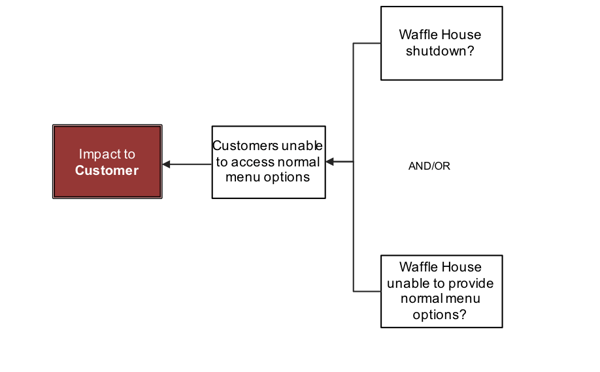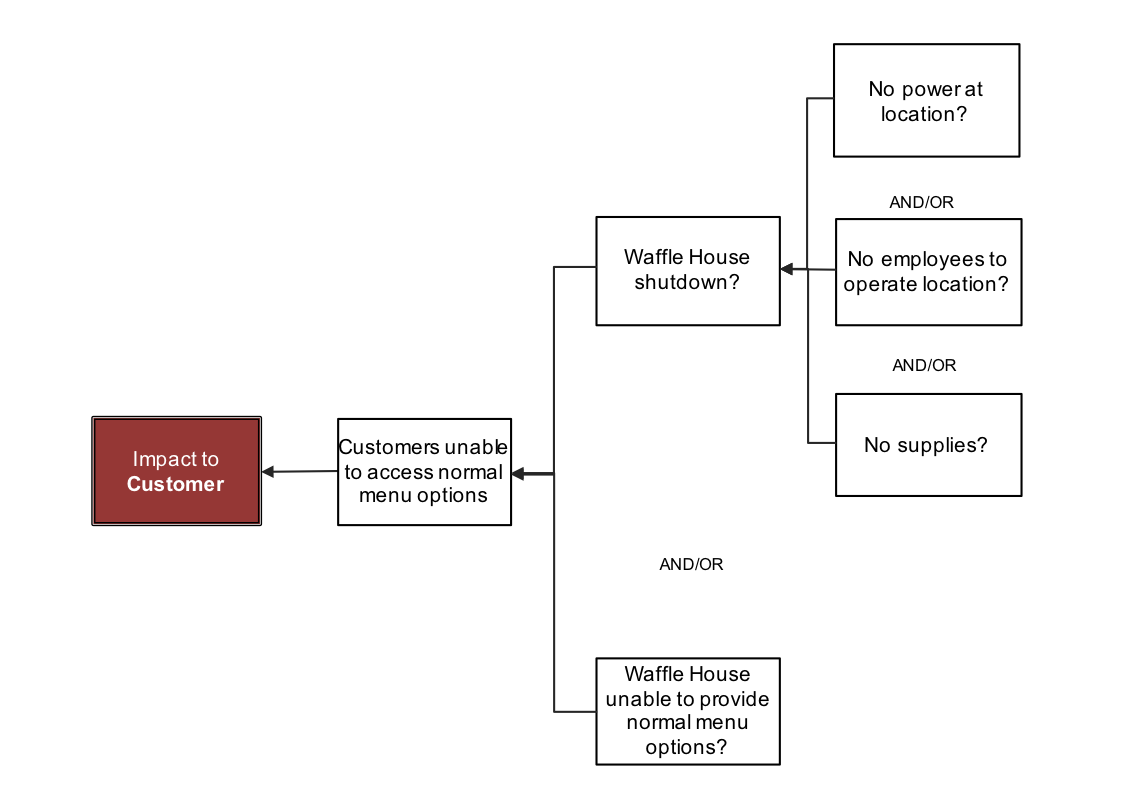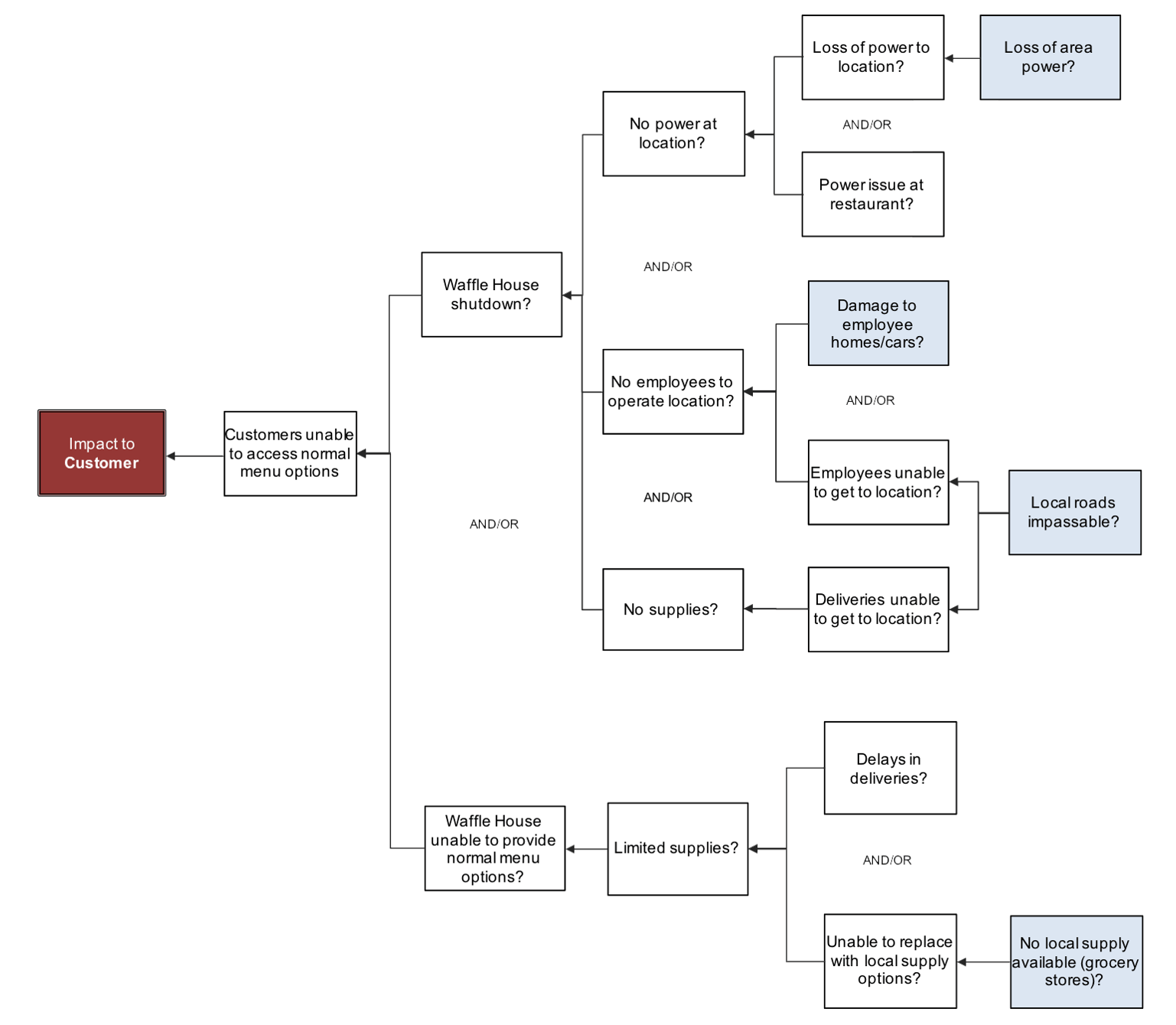What do FEMA (the Federal Emergency Management Agency that responds to natural disasters such as hurricanes, forest fires, tornadoes, etc.) and Waffle House (a 24-hour, southern restaurant chain) have in common?
You might immediately think, “not much.” However, the New York Post reported that FEMA closely monitors the Waffle House menu offered in areas affected by natural disasters as an indicator of how hard the area has been hit and how the recovery process for that area is progressing.
Now you’re probably asking yourself, “How would the Waffle House menu be an indicator of disaster recovery?” The answer is that because the causes that limit the Waffle House menu are the same causes that FEMA is concerned about for natural disaster recovery. Waffle House is a restaurant that operates 24 hours per day, 365 days each year. Being able to provide daily service to its clients is one of the main goals of the organization.
Offering no service, or even offering a limited menu, severely impacts the customer service goal for the company. So, what could cause a Waffle House location to offer a limited menu or to actually shutdown? Let’s see if we can show that on a Cause Map™ diagram.
What’s a Cause Map™ Diagram?
A Cause Map diagram is a visual explanation of why an incident occurred. With the Cause Mapping® root cause analysis, we start on the left with our problem or impact to goals, and build to the right, including factors that caused the effect.
What’s the Problem Here?
The problem in this example is that Waffle House customers are impacted by not having access to the normal Waffle House menu. Now we ask ourselves, “What could cause this effect happen?” (This is a slightly different question than “why did this happen” – which would be for a specific event. Because we are not looking at a specific incident, we are going to include all causes that could cause this impact.) The causes can be seen in the map below. We’ve decided that customers not having access to the full menu could be caused by two reasons: the Waffle House location is shut down and/or the location is not able to provide the normal menu options.

What’s Next?
Do you think this level of explanation would be valuable for FEMA? Probably not. Let’s channel our inner three-year-old and let’s ask more questions to get more specific. We can look at the top cause, which now turns into an effect: Waffle House location is shut down. Well, what could cause the location to be shut down? In this example one could say things like: the restaurant has no power/electricity, no employees available to work, no supplies/ingredients available to cook.

What do you think? Does it seem like we’re getting closer to things that FEMA would deem valuable? Now that you’re familiar with the process, go through and think about what else could be added.
Looking at our Cause Map diagram below, possible causes for Waffle House’s inability to serve a full menu after a natural disaster could include: loss of power to large areas, damage to employee homesites, impassable roads, and/or grocery stores without food. Do you see any information that might indicate how the recovery process is going after a hurricane or natural disaster?
Now it’s Your Turn
What else do you think can be added to the Cause Map diagram above? Our Cause Map template can help you and your team break down even the most complex issues effectively and efficiently. We’d love to hear from you! Download the template to experiment with this example and tell us what else you think should be added to the map in the comments below.
Interested in learning more? Check out our new Online Short Courses. Whether you need a short refresher course for a previously attended Cause Mapping® Root Cause Analysis Workshop, or you’re looking for an introduction to Cause Mapping root cause analysis, our Online Short Course topics teach how to investigate complex problems, identify solutions, and establish problem-solving processes within your organization. You can earn CEUs, too!












